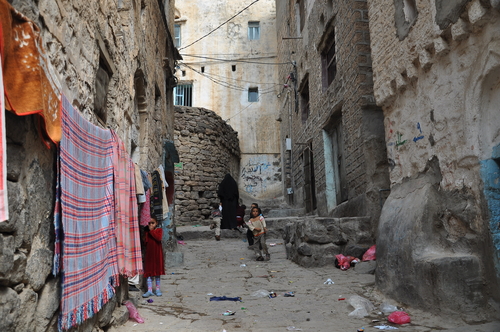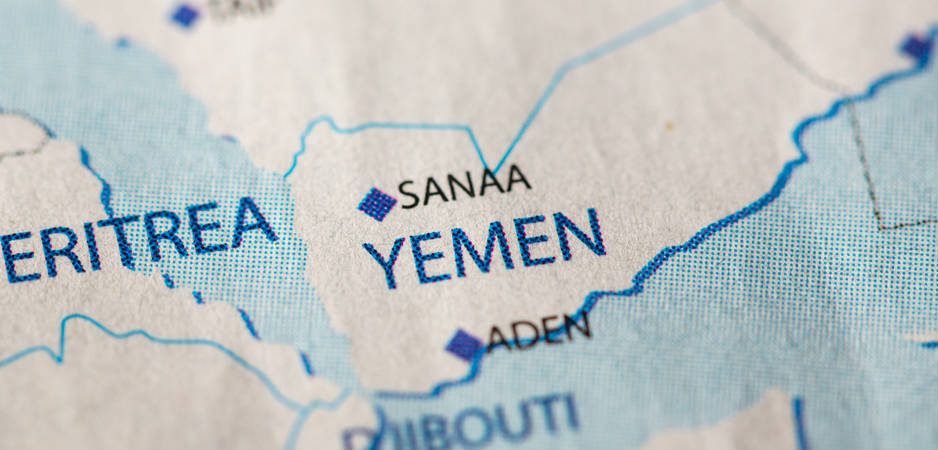Yemen’s draft constitution does not establish enough power-sharing mechanisms to ensure viability.
The Constitutional Drafting Committee finalized a proposal for a post-war Yemeni state in January 2015, which established a six-region federalized state. The Houthi rebels immediately rejected this document. In particular, the Houthis opposed the six-way federal division, favoring instead a two-region, north-south divide that would cement their wartime gains. This is an unlikely solution, seeing as it could lead to the ultimate secession of south Yemen. Beyond the issue of regional division, the draft constitution creates an unstable institutional structure that does not establish enough power-sharing mechanisms to ensure viability.
As negotiators gather in Kuwait for renewed talks, it is important to look at an alternative system of post-conflict institution building. Instead of the presidential system proposed in the draft document, framers of a new constitution should propose a semi-presidential, consociational model that adopts aspects of other post-conflict constitutional structures in deeply-divided societies.
Consociatoinalism in Deeply-Divided Societies
Consociationalism has been a prominent, yet controversial, theory of post-conflict institution building for nearly half a century. First proposed by Arend Lijphart in his 1969 work Consociational Democracy, the theory has been applied to states as diverse as Northern Ireland, Lebanon and Iraq. Consociationalists seek “a Democratic solution to societies confronted with durable ethnic division and political conflict.” To do so, institutions are built to ensure both regional self-governance and executive power-sharing, often in a federal state. Consociationalists espouse four key principles: executive power-sharing, autonomy/self-government, proportionality and veto-rights.
Consociationalism is not without its critics. Many believe that consociational systems entrench sectarian divisions, privilege sectarian elites, appease radical factions and fail to lead to a cohesive, integrated state. Despite these criticisms, consociational structures ensure confidence building between factions that are unlikely to integrate in the short term and ensure that radicals are brought into the system, instead of remaining on the outside where they can be a destabilizing force. Ensuring proportionality and veto-rights also guarantees fairness and builds confidence in the system.
Executive Power-Sharing
There is no one consociational prescription for a deeply divided society and states that have implemented consociational structures have done so in different ways. A consociational structure in Yemen would differ significantly from the structure presented in the draft constitution and could establish a better prospect for peace. First, there would certainly be a shift from a presidential system to a semi-presidential system and a re-evaluation of the six-region federal structure in light of the Houthis’ significant opposition.
Executive power-sharing is a crucial aspect of consociational systems and ensures an equal voice in the governance of a deeply-divided state. The current draft constitution calls for a president and vice president who must be from different regions (Article 180). However, a semi-presidential system with a weak president is a more stable structure for post-conflict situations, especially in states with a history of abuse by the central authority. Thus, the executive model employed by Northern Ireland could be more effective. This model provides equal powers for a prime minister and a deputy prime minister, one from the north and one from the south. They should be elected on a joint ticket subject to a cross-community vote requiring either parallel consent, a majority of representatives from both the north and the south, or a weighted majority, 40% of representatives from both the north and the south and 60% of the entire Parliament.
So too, the resignation of one would automatically trigger the resignation of the other. To ensure adequate representation in the executive, the d’Hondt method should be used to allocate ministerial posts, when the largest parties are awarded posts proportionally based on their share of the vote without the need for coalition negotiations. The president should have limited, ceremonial powers, serve one six-year term, be chosen by the Parliament by a cross-community vote, and the position should alternate each term between the north and the south.
Autonomy
Autonomy or self-government played a critical role in the draft constitution. However, the current method of regional division has been roundly rejected. In light of this rejection, the Iraqi federal model may be a better alternative. In this model, the nation could retain its current twenty-one governorates that would be granted certain powers. These governorates would then be given the option to join together to form regions, which would be given additional powers, by holding referendums.

Ibb, Yemen © Shutterstock
Thus, regions can form organically and would be based on popular will. Though it does not preclude the possibility of a two-region state, it does create barriers to that outcome. In Iraq, some feared that this model would lead to large Sunni and Shi’ite regions. However, this never occurred. Each governorate would be given representatives in a Federal Council and each region formed would be allocated additional representatives. In keeping with the current draft constitution, the Sana’a and Aden governorates would be given a special status and would not be permitted to join regions.
Proportionality in the electoral system ensures fair representation of citizen preferences. The ideal model is proportional representation with a single transferable vote (PR-STV) in multiple member districts. This would allow for the growth of several parties and for the expression of multiple preferences at the voting booth. Implementing a PR-STV electoral system locally and nationally would also provide greater representation for Yemen’s tribes, allowing them to compete against larger parties for lower order preferences. As stated in the draft constitution, the south should be represented at a share of 40% (Article 139).
Veto-rights ensure that neither the north nor the south can dominate the legislative process. The two voting methods mentioned above, parallel consent and weighted majority, should be required for key pieces of legislation that would have a major impact on the state or would disparately impact either the north or the south. The Federal Council should also retain the provision requiring the support of at least one-third of representatives from the south for a piece of legislation to pass (Article 143).
Yemen First
To combat the external pressure asserted by Saudi Arabia and Iran, a provision similar to that in Lebanon should be considered, agreeing to forgo regional affiliations and instead peruse a “Yemen first” policy. Additionally, assurances must be made for the complete demilitarization of rebel forces and for equal representation of both regions in the military.
Freedom of religion and minority rights must also be guaranteed and customary law and traditions should be respected for Yemen’s various tribes. So too, a consent principle should be considered, ensuring that any breakup of Yemen would be subject to a nation-wide referendum. A new constitution would also need to provide greater clarity on the division of powers between the various levels of government and the allocation of natural resource revenues.
As the parties gather in Kuwait for a fresh round of negotiations, there is renewed optimism for peace. For a new peace to last, however, proper institutions must be built to ensure stability and trust through power-sharing. A consociational structure could provide the best means of resolving the conflict, building confidence between the north and the south and ensuring self-governance in a federal, semi-presidential system.
The views expressed in this article are the author’s own and do not necessarily reflect Fair Observer’s editorial policy.
Photo Credit: sevenMaps7 / Shutterstock.com
 We bring you perspectives from around the world. Help us to inform and educate. Your donation is tax-deductible. Join over 400 people to become a donor or you could choose to be a sponsor.
We bring you perspectives from around the world. Help us to inform and educate. Your donation is tax-deductible. Join over 400 people to become a donor or you could choose to be a sponsor.
Support Fair Observer
We rely on your support for our independence, diversity and quality.
For more than 10 years, Fair Observer has been free, fair and independent. No billionaire owns us, no advertisers control us. We are a reader-supported nonprofit. Unlike many other publications, we keep our content free for readers regardless of where they live or whether they can afford to pay. We have no paywalls and no ads.
In the post-truth era of fake news, echo chambers and filter bubbles, we publish a plurality of perspectives from around the world. Anyone can publish with us, but everyone goes through a rigorous editorial process. So, you get fact-checked, well-reasoned content instead of noise.
We publish 2,500+ voices from 90+ countries. We also conduct education and training programs
on subjects ranging from digital media and journalism to writing and critical thinking. This
doesn’t come cheap. Servers, editors, trainers and web developers cost
money.
Please consider supporting us on a regular basis as a recurring donor or a
sustaining member.
Will you support FO’s journalism?
We rely on your support for our independence, diversity and quality.






